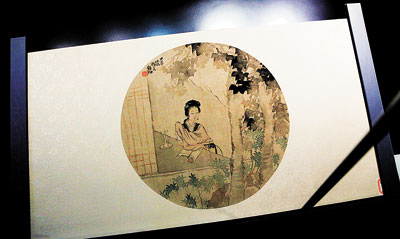
Wang Yuanyuan
cheekywang@hotmail.com
A TOTAL of 118 pieces of ancient Chinese fans are now being exhibited at the Shenzhen Museum in Futian District until Nov. 30.
The fans are collections from the Huzhou Museum in Zhejiang Province and the oldest of them can be traced back to the Ming Dynasty (1368-1644).
The history of Chinese fans goes back over 3,000 years, around the time of the Shang Dynasty (1660-1100 B.C.). The use of fans was originally a symbol of status and power, but is now commonly used as a tool just for cooling down. The variety of Chinese fans and the sophistication of production techniques are unparalleled in the world. The arts of calligraphy and painting are the most commonly used techniques for decorating Chinese fans.
In fact, the fan was not used for cooling until the Zhou Dynasty (1100-256 B.C.), more than 2,000 years ago. At that time, fans were usually made of feathers and were only popular among the noble class. The fan was popularized during the Han Dynasty (206 B.C.-A.D. 220) when the simple bamboo fan and the cattail-leaf fan were invented. Fans were most popular among the common people during the Song Dynasty (960-1279). Around the same period, a silk fan in the shape of the moon, called the round fan, became a favorite accessory for the young ladies of the era, especially among the noble class. Later, other shapes were developed, such as round and flat ovals, or sometimes in the shape of a Chinese plum flower.
The ribs of the fan were often made of animal bones, wood or bamboo, while handles were engraved with beautiful designs and decorated with jade pendants. Beautiful scenes of mountains, waterfalls or flowers were also embroidered on the face of a moon-shaped fan or a round fan. The popularity of these fans enhanced the development of painting and calligraphy. From the Song Dynasty on, fan painting became an independent art form. The typical composition used in fan painting could be seen in many landscape paintings and figure paintings at the time.
The folding fan is said to have been introduced to China from Japan during the late Song Dynasty. As this fan could be easily folded and carried, it soon became fashionable. Compared to other types of fans, folding fans are more like a piece of handicraft. The ribs of folding fans were made from valuable materials, such as hawks-bill turtles, ox horn, ebony, mottled bamboo, ivory and jade, all carved into different shapes. The different sizes of folding fans are classified by the number of ribs the fan has, usually seven, nine, 12, 14, 16 or 18.
For thousands of years, the painted fan was preferred by Chinese scholars as a symbol for artistic expression. The paintings can not only express their attitudes towards the world and nature, but also show their status, social ranking and taste.
If a famous artist painted a fan, it could be very valuable. For example, a folding fan painted in the ancient script of Chinese calligraphy by Zhang Daqian can be sold at more than 200,000 yuan (US$33,000).
The development of art styles of fans reached its peak in the Ming and Qing (1644-1911) dynasties.
Most of the fans at the exhibition were painted by well-known artists and calligraphers in the Ming and Qing dynasties, as well as by modern artists. The paintings include mountains, plants, flowers and young ladies.
Among these is a folding fan with a mountain view painted by Zhang Yuanju, a painter and calligrapher in the Ming Dynasty, as well as a round fan with green leaves painted by Zhang Xiong, a well-known fan painter in the Qing Dynasty.
|

